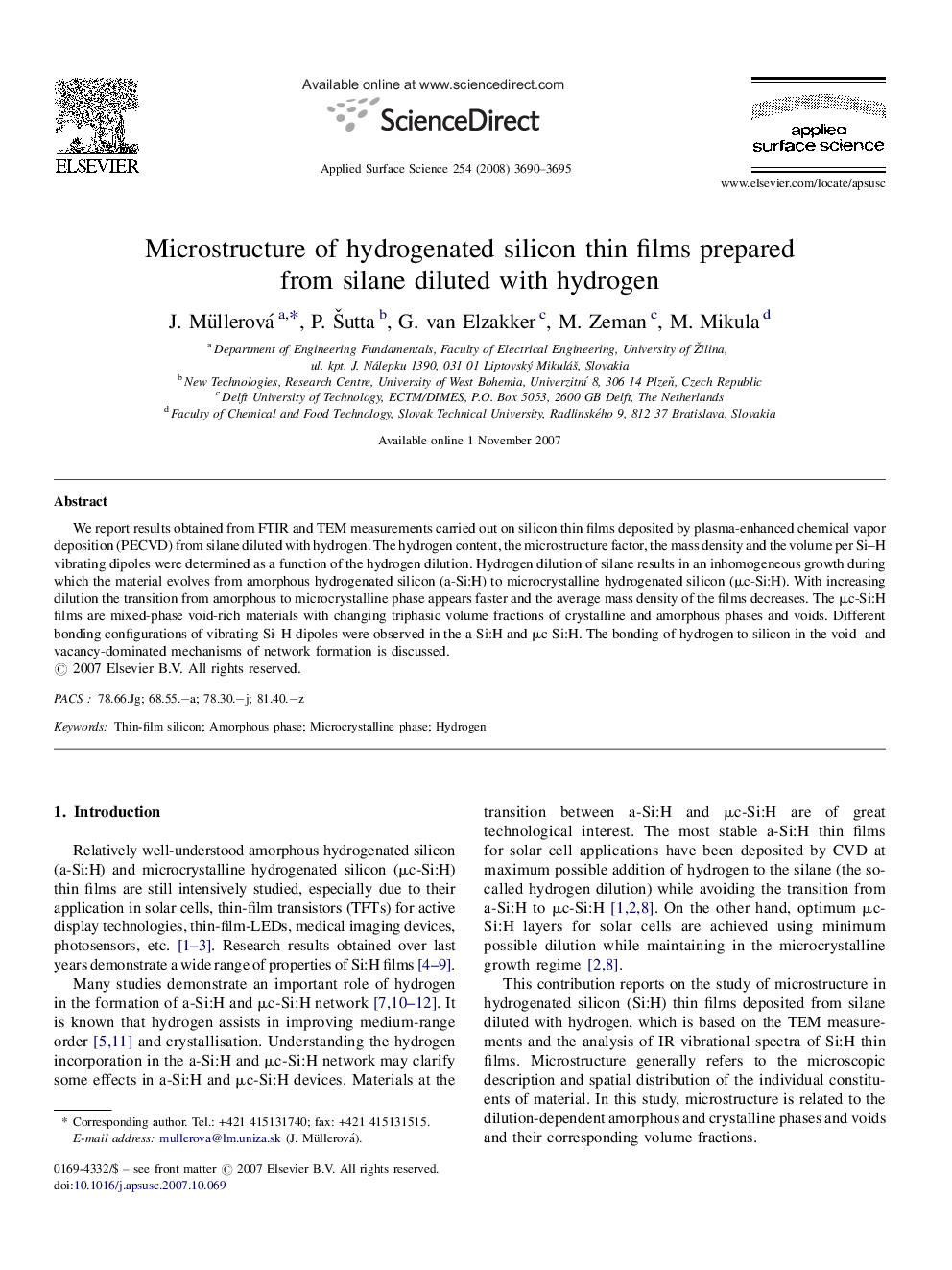| Article ID | Journal | Published Year | Pages | File Type |
|---|---|---|---|---|
| 5362507 | Applied Surface Science | 2008 | 6 Pages |
Abstract
We report results obtained from FTIR and TEM measurements carried out on silicon thin films deposited by plasma-enhanced chemical vapor deposition (PECVD) from silane diluted with hydrogen. The hydrogen content, the microstructure factor, the mass density and the volume per Si-H vibrating dipoles were determined as a function of the hydrogen dilution. Hydrogen dilution of silane results in an inhomogeneous growth during which the material evolves from amorphous hydrogenated silicon (a-Si:H) to microcrystalline hydrogenated silicon (μc-Si:H). With increasing dilution the transition from amorphous to microcrystalline phase appears faster and the average mass density of the films decreases. The μc-Si:H films are mixed-phase void-rich materials with changing triphasic volume fractions of crystalline and amorphous phases and voids. Different bonding configurations of vibrating Si-H dipoles were observed in the a-Si:H and μc-Si:H. The bonding of hydrogen to silicon in the void- and vacancy-dominated mechanisms of network formation is discussed.
Related Topics
Physical Sciences and Engineering
Chemistry
Physical and Theoretical Chemistry
Authors
J. Müllerová, P. Å utta, G. van Elzakker, M. Zeman, M. Mikula,
